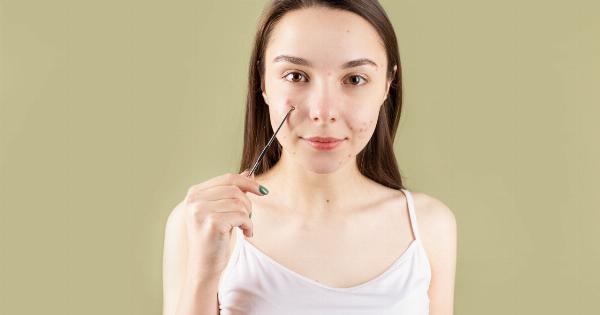Chronic spontaneous urticaria (CSU) is a skin condition characterized by the sudden appearance of red, itchy, and raised welts (hives) on the skin.
These welts can appear on any part of the body and can be painful, especially if they appear on sensitive areas such as the lips or eyelids. The condition is considered chronic if it persists for more than six weeks, with no obvious cause or trigger.
Causes of Chronic Spontaneous Urticaria
The exact cause of CSU is unknown, but it has been linked to the overproduction of histamine, which is a chemical released by the body’s immune system in response to an allergen.
Histamine causes inflammation, which leads to the development of hives. Some possible triggers or factors that can contribute to the development of CSU include:.
- Foods: Certain foods such as nuts, eggs, milk, and shellfish can trigger CSU in some individuals.
- Medications: Some medications such as antibiotics, aspirin, and nonsteroidal anti-inflammatory drugs (NSAIDs) can cause CSU.
- Infections: Infections such as colds, sinus infections, and strep throat can trigger CSU in some people.
- Stress: Emotional stress can cause CSU in some people.
- Autoimmune disorders: Some autoimmune disorders such as lupus and thyroid disease can cause CSU.
Treatments for Chronic Spontaneous Urticaria
There is no cure for CSU, but there are treatments available that can help manage the symptoms. Treatment options may include:.
- Antihistamines: Antihistamines are the most common treatment for CSU. They help reduce the amount of histamine released in the body, which can help alleviate symptoms. There are several types of antihistamines available, including both over-the-counter and prescription medications.
- Corticosteroids: Corticosteroids are often prescribed for severe cases of CSU. They work by reducing inflammation in the body. However, they can have serious side effects if used for a long period of time, so they are generally only used for short-term treatment.
- Immunosuppressants: Immunosuppressants are drugs that suppress the immune system. They are typically prescribed for severe cases of CSU that do not respond to other treatments.
- Xolair (omalizumab): Xolair is a biologic medication that is sometimes used to treat CSU. It works by blocking the action of IgE, which is a type of antibody that is involved in the release of histamine.
- Phototherapy: Phototherapy involves exposing the skin to certain wavelengths of light. It can help reduce inflammation and alleviate symptoms of CSU.
Lifestyle Changes
In addition to medical treatments, there are several lifestyle changes that individuals with CSU can make to help manage their symptoms. These may include:.
- Avoiding triggers: By identifying and avoiding triggers for CSU, individuals can reduce the frequency and severity of their symptoms.
- Wearing loose clothing: Tight clothing can irritate the skin and worsen symptoms of CSU. Wearing loose and comfortable clothing can help alleviate symptoms.
- Maintaining good skin hygiene: Keeping the skin clean and moisturized can help reduce the likelihood of a flare-up of CSU.
- Managing stress: Learning to manage stress through techniques such as meditation or yoga can help reduce the frequency and severity of symptoms of CSU.
Conclusion
Chronic spontaneous urticaria can be a frustrating and uncomfortable condition to deal with. However, with proper management and treatment, individuals with CSU can live a full and active life.
By working closely with a healthcare provider and making lifestyle changes, individuals with this condition can reduce the frequency and severity of their symptoms and improve their overall quality of life.




























